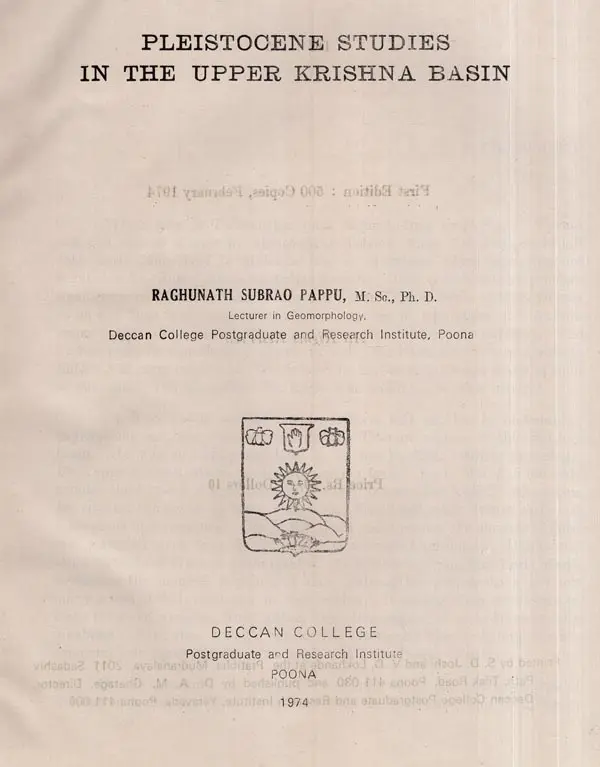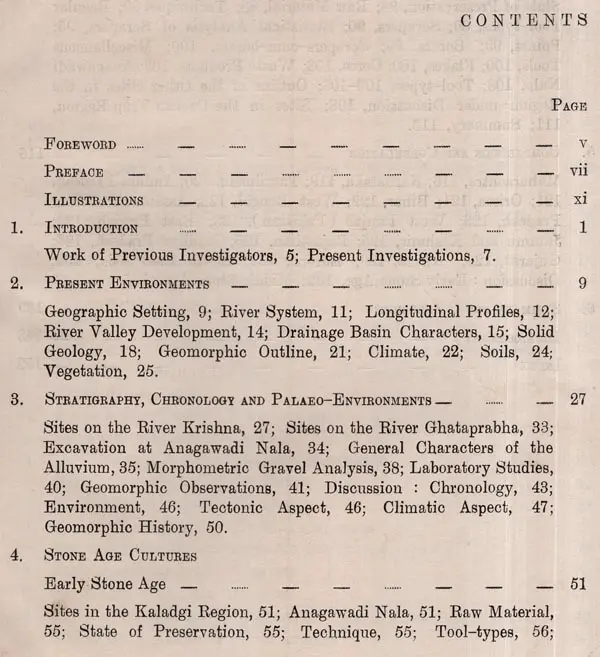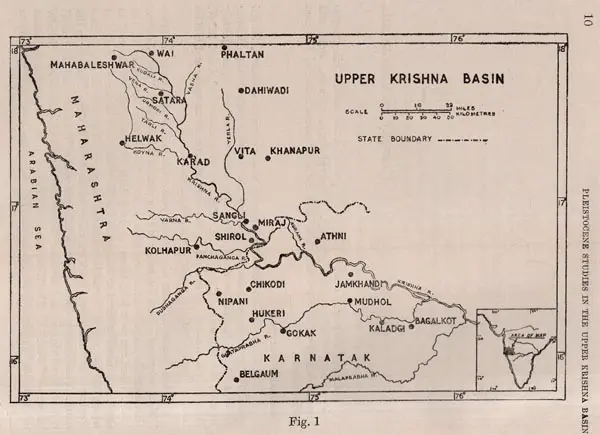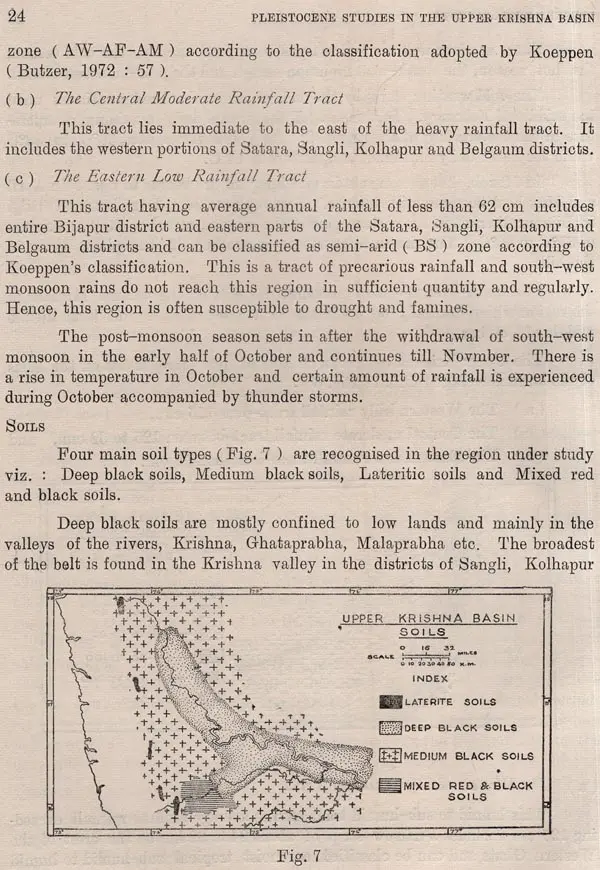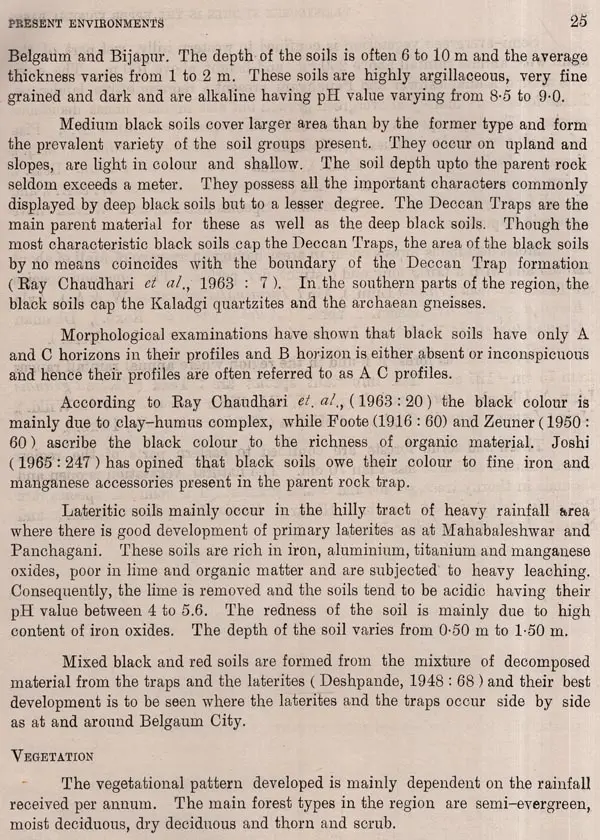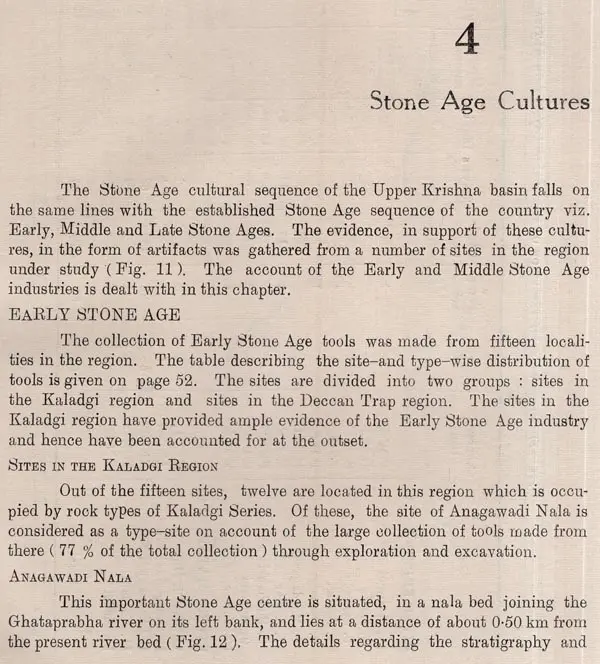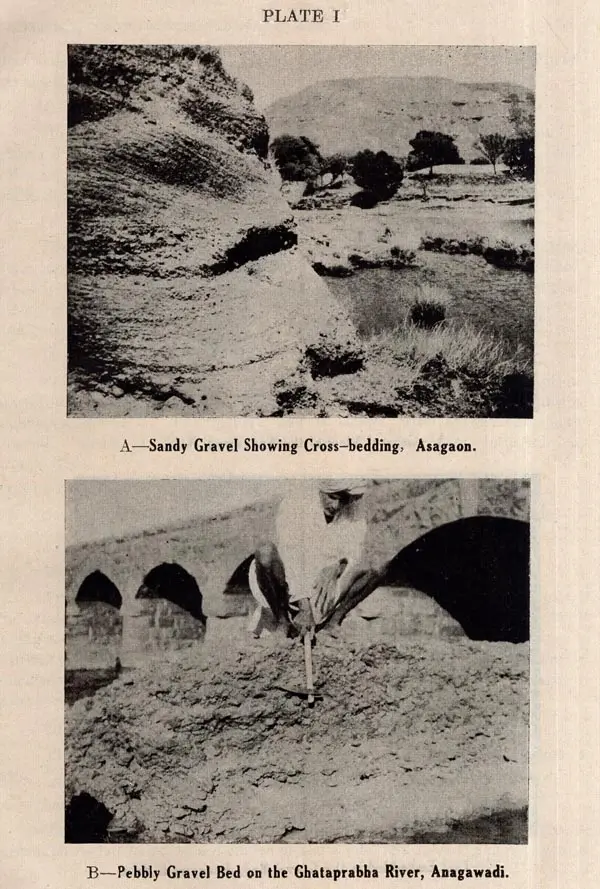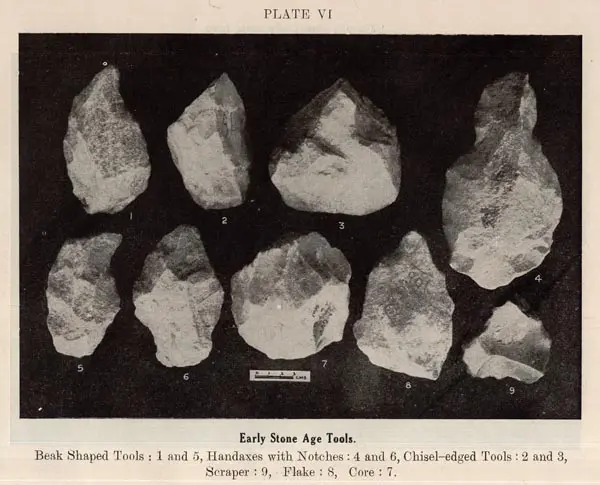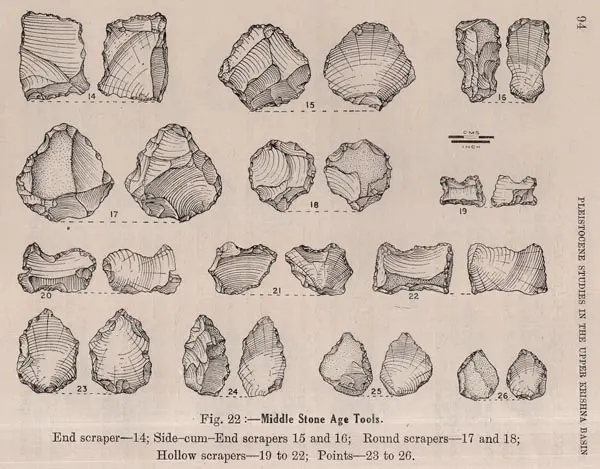
Pleistocene Studies in the Upper Krishna Basin (An Old and Rare Book)
Book Specification
| Item Code: | UBE932 |
| Author: | Raghunath Subrao Pappu |
| Publisher: | Deccan College Postgraduate and Research Institute |
| Language: | English |
| Edition: | 1974 |
| Pages: | 159 (B/W Illustrations) |
| Cover: | PAPERBACK |
| Other Details | 9.50 X 7.00 inch |
| Weight | 330 gm |
Book Description
When genuine Palaeolithic tools began to turn up at Nasik, Nevasa and at a number of sites in Ahmednagar district, there was little doubt left that Early Man lived in Maharashtra, as elsewhere. This region was not uninhabited as Robert Bruce Foote had thought. Then a more specific problem was before us. Did this man occupy the Upper Krishna basin of Maharashtra as he had done in the middle and lower reaches in Karnataka and Andhra respectively? These two or three regions are environmentally different. The former receives considerably heavy rainfall, the latter two from moderate to light. But more important, the former lacks the suitable raw material such as quartzite. Did these affect the Early Man and if so, to what extent?
Dr. R. S. Pappu was asked to investigate this problem by undertaking explorations in these two environmentally different regions of the Krishna basin. He was eminently qualified as he had his basic training in geology. Dr. Pappu's investigations have confirmed our fears. Early Man had not only avoided the forested Mahabaleshwar plateau, but also the foothills where now are situated the towns of Wai, Satara and Karad and other sites of early and subsequent historic times. One of the main reasons was the absence of good raw material, even trap dykes, which criss-cross Ahmednagar, Dhulia and other districts of Western Maharashtra. It is indeed curious that Early Man's successors the man of Middle and Late Palaeolithic periods have not left many traces of their existence in this region. It is only when man learnt to make tools and weapons from metals that this region came to be more fully inhabited. Even then it would appear that these early historic habitations are comparatively fewer than those in Nasik and Ahmednagar districts.
The Quaternary, the latest and the shortest of all the geological periods, commenced approximately two million years ago according to latest estimates (West, 1968:1; Butzer and Hansen, 1968: 11) and continues to the present. It is subdivided into two epochs-the Pleistocene and the Holocene. The latter covers the period of the last ten millenia of geological time. The Quaternary is one of the unique and the most fascinating among the geological periods although brief by geological standards and is often referred to as the Age of Man or Great Ice Age. It is during the Pleistocene epoch of the Quaternary that there was the emergence and the evolution of Man, the tool maker and the development of human cultures and hence the study of this period is of greatest interest to prehistoric archaeologist. The dominating characteristic feature of the Quaternary in many parts of the world was intense climatic changes. There were four major glaciations or ice advances popularly referred to as Gunz, Mindel, Riss and Wurm. Besides these intense climatic changes, the Pleistocene also witnessed large scale tectonic movements, sea level changes and volcanic activities in many parts of the world.
In recent years, a new branch of science dealing with the various aspects of the Quaternary has emerged as an independent discipline and the studies are undertaken with the aim of reconstruction of environment, chronology and life in the immediate past. This is attempted by the close co-ordination of the useful techniques provided by natural sciences such as geology, geomorphology, pedology, palaeontology, palaeobotany, and palaeohydrolgy.
The Quaternary in India shows full and varied development than all the preceding periods save the Archaean.
**Contents and Sample Pages**
